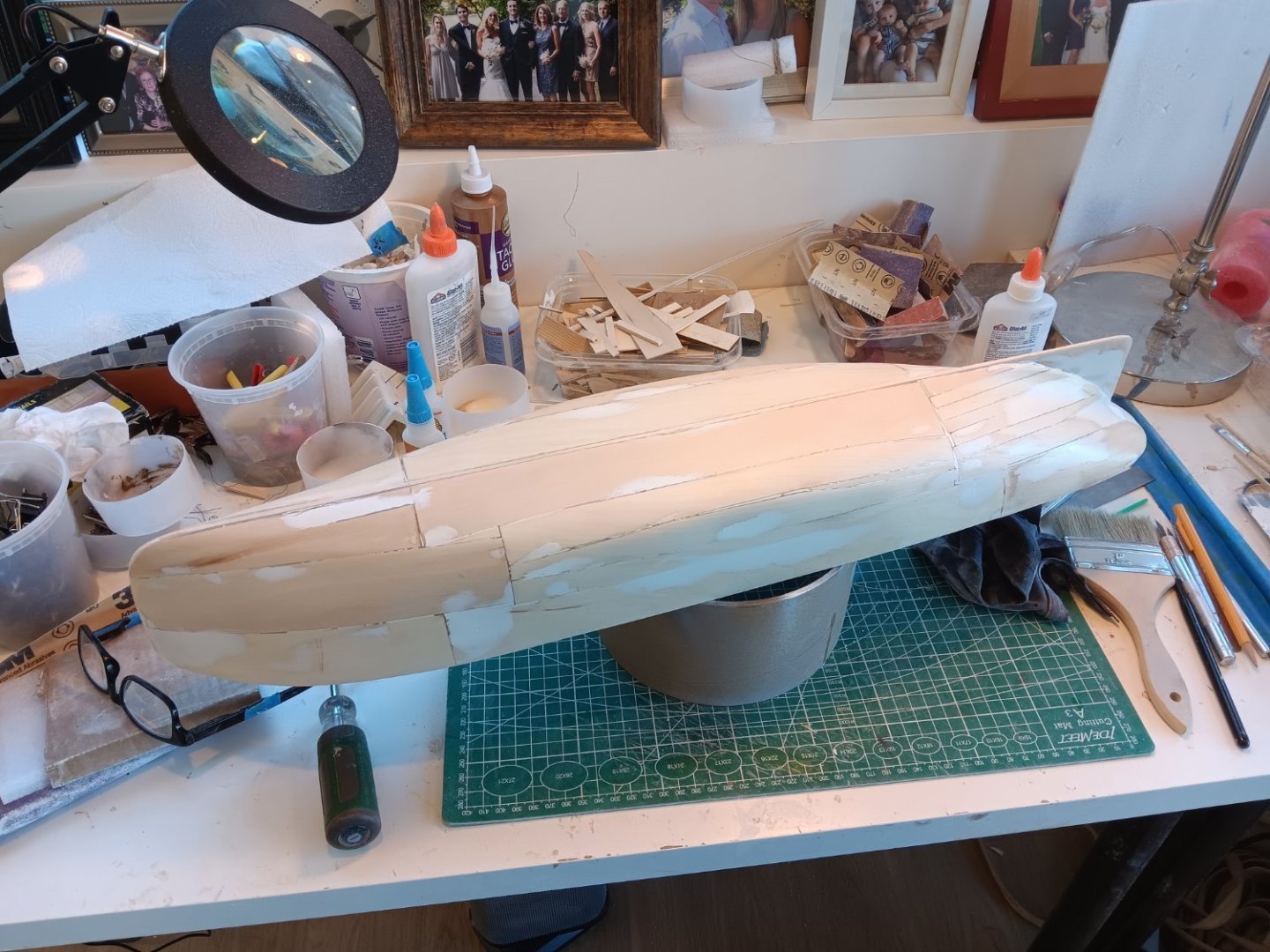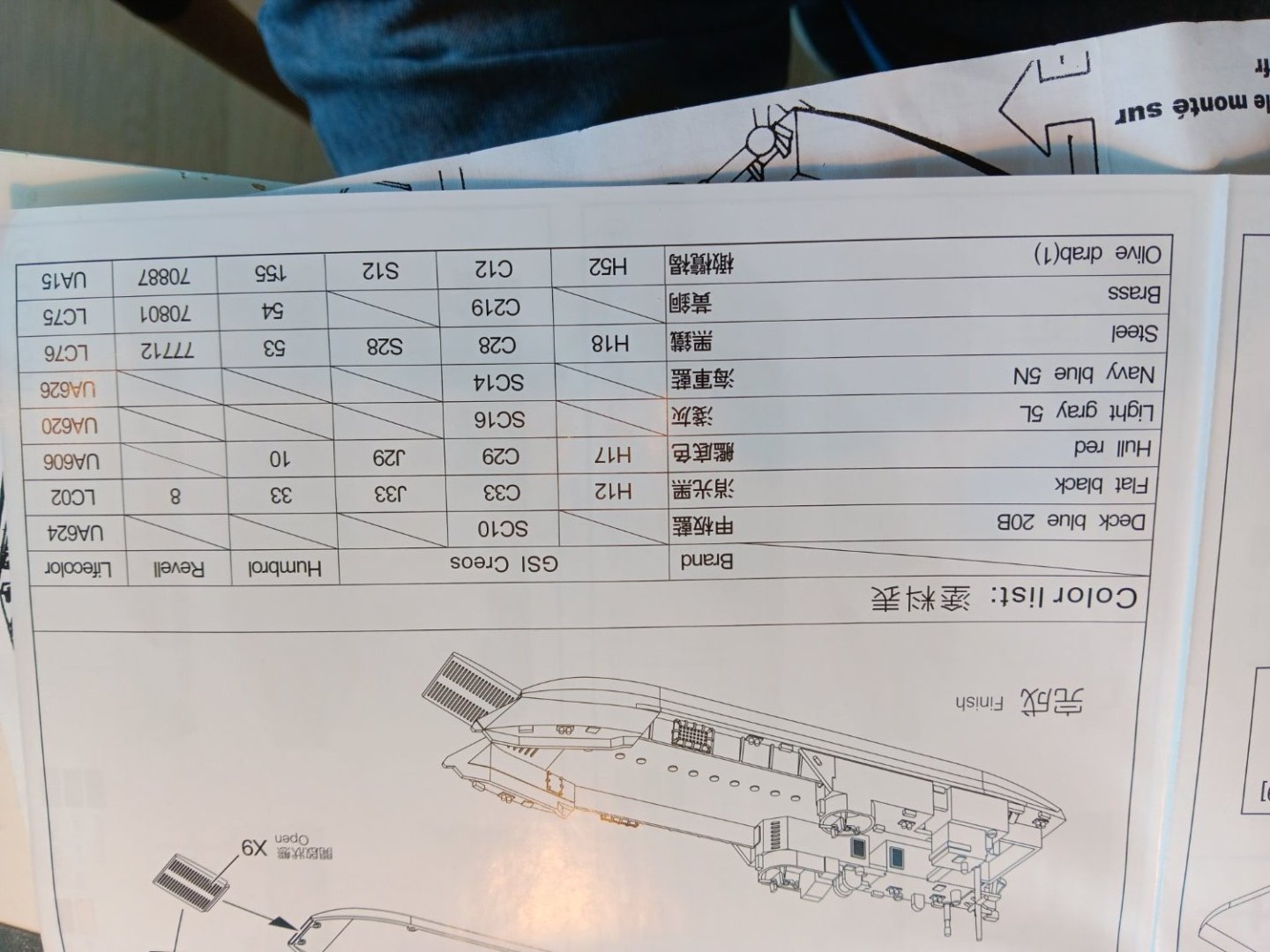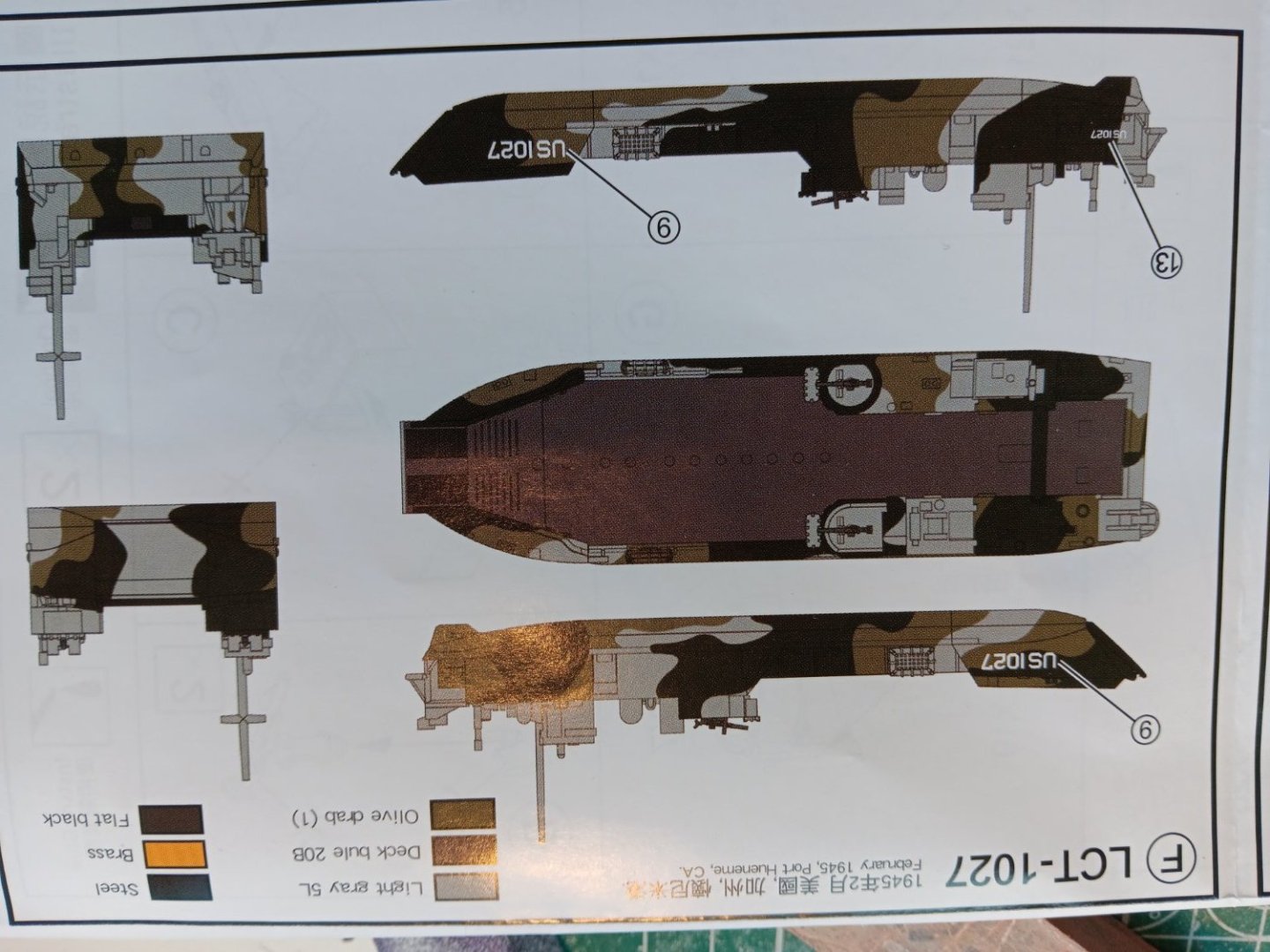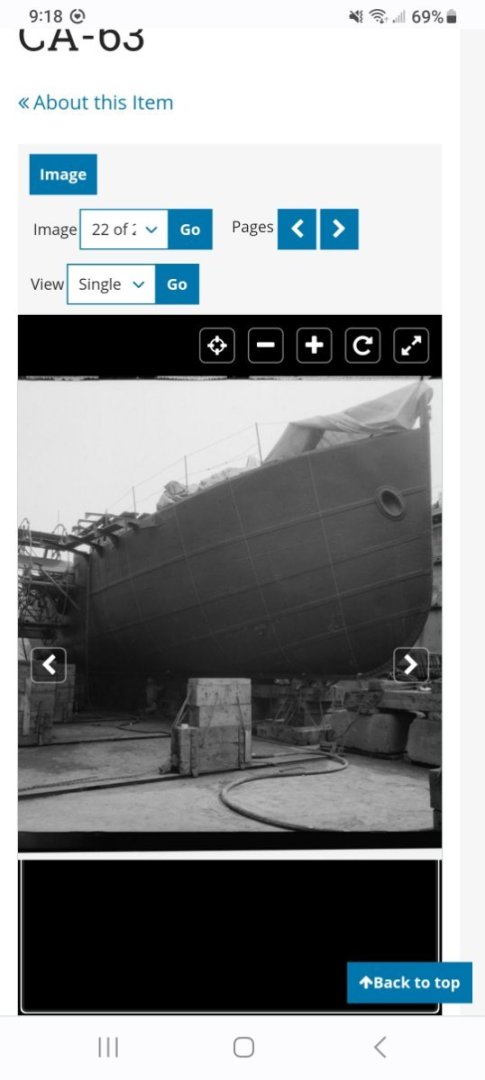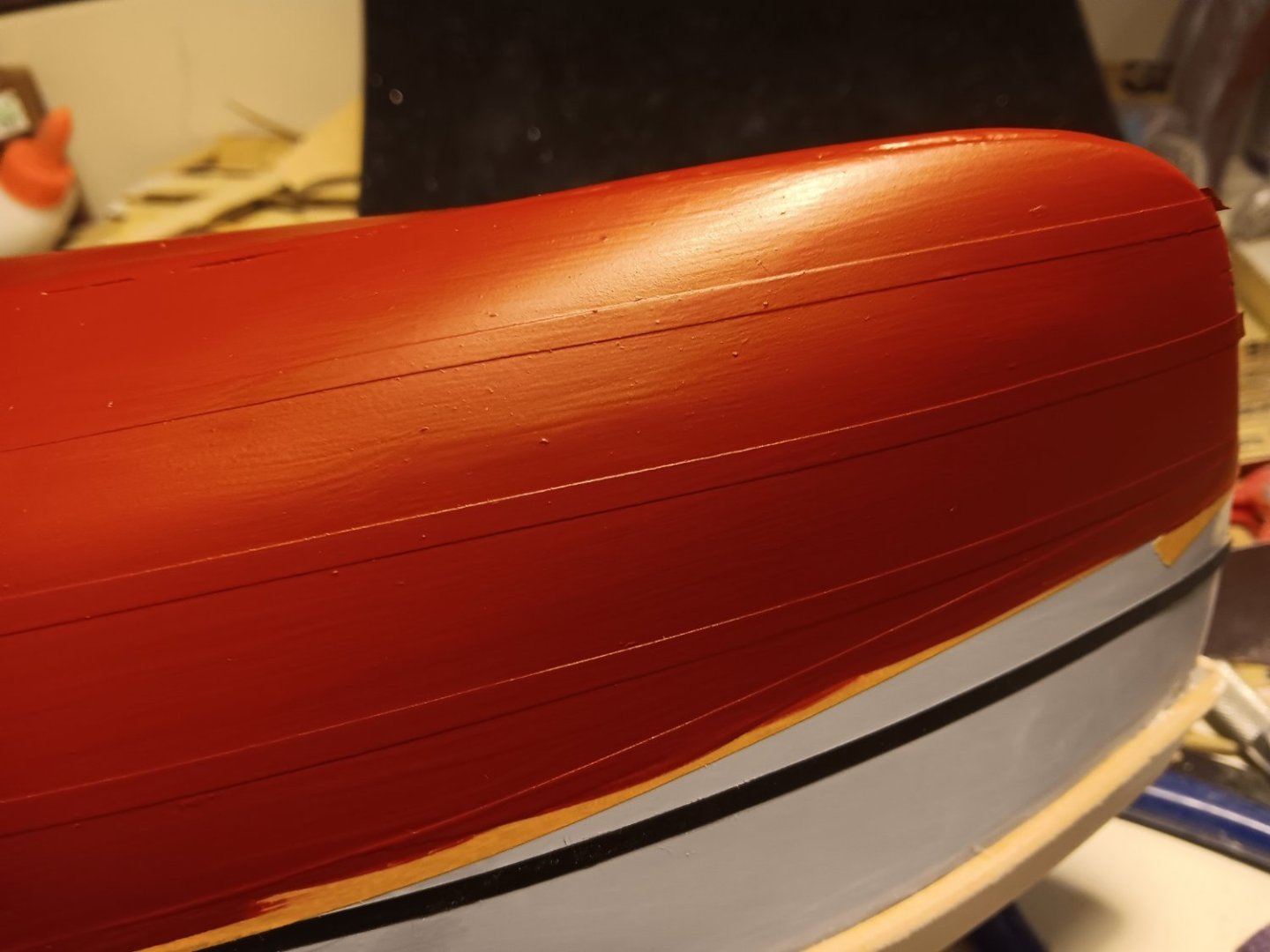
wmherbert
Members-
Posts
285 -
Joined
-
Last visited
Content Type
Profiles
Forums
Gallery
Events
Everything posted by wmherbert
-
I have just started the st roch as well. Thanks for the tip about the museum virtual tour. It shows everything and has a tool for measuring what ever you want. I could easily measure the size and spacing of the buwarks timberheads. I have wanted to eliminate the model's widely spaced ones with more accurate ones but could never find a photo that showed them hood enough for scale. What changes are you thinking about? Bill
- 64 replies
-
- St. Roch
- Billing Boats
-
(and 1 more)
Tagged with:
-
I agree with Keith. The first 2 0r 3 planks starting at the deck usually go on pretty easy. When they get hard skip down toward the turn of the bilge and run one that lays nice and easy. Then do one along keel and then fill in the ones between. I'm no expert at all but I've always gotten a smooth paintable hull. Albeit with sometimes a lot of putty and sanding. I know I will never be as good as a lot of guys are but I can live with that. Planking to me is just something you need to get done with so you can move on to the fun stuff. Bill
-
kit review SMS Sleipner by Hamburger Modellbaubogen Verlag
wmherbert replied to ccoyle's topic in REVIEWS: Model kits
What do you think about buying this kit and then enlarging the sheets to a bigger scale and using them as plans for a scratch built model? I find a lot of appealing card models that would be interesting to do as scratch built models. How feasible and any copyright issues? Bill -
Trust me. Putty, sand, paint and hull will look great. My models all have painted hulls and I've never done a second planking. Beautiful planking is a real skill. Certainly one I don't have. Bill
-
I just finished a scratch build tug at 1/4 inch to foot. The hull was about 26 inches long. Since hull was going to be painted I tried using the widest planks I could. As you can see some were 1.5 inches wide along the bottom and the middle topsides. The stern took narrower planks but they were still over 1/4 inch. A midships there were only 4 planks total and at the front third only 3 planks total. All and all it made the planking much faster and way easier to fair. And when done and painted you can't see anything except a smooth hull. Just an alternate thought. Bill
-
WW2 navy ship colors?
wmherbert replied to wmherbert's topic in Painting, finishing and weathering products and techniques
Alross2 thanks for the info. I checked the site and got some more information on lct 1302 and one additional photo. I have some of my dad's photos but unfortunately everything I've found has been black and white and none even show a pattern. On an old kit I found there is a color scheme with some color names that is the best I've been able to find. I'll try to trace down the paints. Since I don't have an air brush I will have to brush the paint, I guess masking off one layer at a time. Never tried that before so should be interesting. Bill -
Hi, I'm working on a WW2 landing craft tanks ,LCT, which my father skippered in the Pacific in 1944. I'm trying to find the appropriate paint. Is Tamiya AS-8 Navy Blue the correct color? I read that LCTs were painted a blue in the Atlantic and a green in the Pacific theater. I don't have an airbrush set up so will have to use spray cans. Any help would be appreciated Bill
-
Welcome. I'm sure everyone here can point out things that they wished they did a little better on a model. I just try to do each one a little better as my experience and skills improve. And the reality is that you will spend many hours building a model that even your best friend won't spend more than a minute or two looking at. So just relax and enjoy the process and try to gain skills as you go along. Bill
-
Looks great. I'm always amazed at how much difference little last things like line coils make. Bill
- 122 replies
-
- Artesania Latina
- Pen Duick
-
(and 1 more)
Tagged with:
-
I need to do white letters on a black background for my ship's name. I can see how i can print black letters on clear decal papers and I have seen white decal paper but can't see how I could print white letters. I've been searching the forum and I'm sure it's in here somewhere but would really appreciate some help. Bill
-
Remembering to drill out blocks before installing them and to run a little CA glue on ends of lines before trying to push them through blocks really helped me. Bill
- 152 replies
-
- Flirt
- Vanguard Models
-
(and 1 more)
Tagged with:
-
Stepping the mast with a plum bob...two questions.
wmherbert replied to HardeeHarHar's topic in Masting, rigging and sails
I do glue the masts with PVA while doing the adjusting . And then when glue is dry I tie down temporary shrouds down to the sides of the model to steady them until actual shrouds are installed. Bill -
Stepping the mast with a plum bob...two questions.
wmherbert replied to HardeeHarHar's topic in Masting, rigging and sails
I first use an adjustable square . I place it on the plans to get the proper rake. Then I place the model on a flat level surface and adjust so boat is level side to side and waterline is level. Then I place the adjustable level along side the model and sight its edge and line up the mast fore and aft. Then a big carpenter's square (18×24 inches) I place directly in front on the boat and sight back along its edge to line up the mast. I have a jig that I made to steady the mast and hold it in position. I can slide the boat fore and aft and side to side to move the mast until everything lines up. Doesn't take that long and I think it gets it as good as is possible. Bill -
One rather late question about your hull plating. I'm starting a scratch 1914 paddle wheel steam tug at 1 to 48 that had a riveted steel hull. I've liked the way your plates came out. Are the individual sheets of your aluminum foil butted together at edges or are they overlapped? And one other question. How did you make the half round rub rail running along the hull? Thanks, Bill
- 330 replies
-
Have you considered using silkspan? I've used it on my last three models at 1 to 50 scale and I think it's come out very well. I've never felt that using cloth looked so good. On each I got running rigging all done without sails and debated about adding the sails and at the end was very happy I did. Now these were all fishing schooners. Not sure what is best on a big square sailed man of War model. Bill
- 184 replies
-
- Bluenose
- Model Shipways
-
(and 1 more)
Tagged with:
About us
Modelshipworld - Advancing Ship Modeling through Research
SSL Secured
Your security is important for us so this Website is SSL-Secured
NRG Mailing Address
Nautical Research Guild
237 South Lincoln Street
Westmont IL, 60559-1917
Model Ship World ® and the MSW logo are Registered Trademarks, and belong to the Nautical Research Guild (United States Patent and Trademark Office: No. 6,929,264 & No. 6,929,274, registered Dec. 20, 2022)
Helpful Links
About the NRG
If you enjoy building ship models that are historically accurate as well as beautiful, then The Nautical Research Guild (NRG) is just right for you.
The Guild is a non-profit educational organization whose mission is to “Advance Ship Modeling Through Research”. We provide support to our members in their efforts to raise the quality of their model ships.
The Nautical Research Guild has published our world-renowned quarterly magazine, The Nautical Research Journal, since 1955. The pages of the Journal are full of articles by accomplished ship modelers who show you how they create those exquisite details on their models, and by maritime historians who show you the correct details to build. The Journal is available in both print and digital editions. Go to the NRG web site (www.thenrg.org) to download a complimentary digital copy of the Journal. The NRG also publishes plan sets, books and compilations of back issues of the Journal and the former Ships in Scale and Model Ship Builder magazines.


